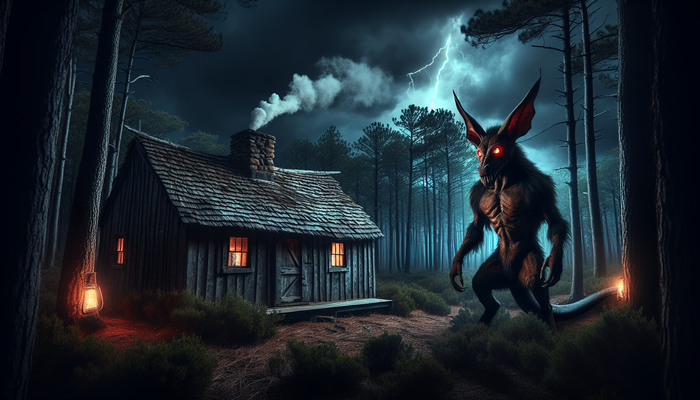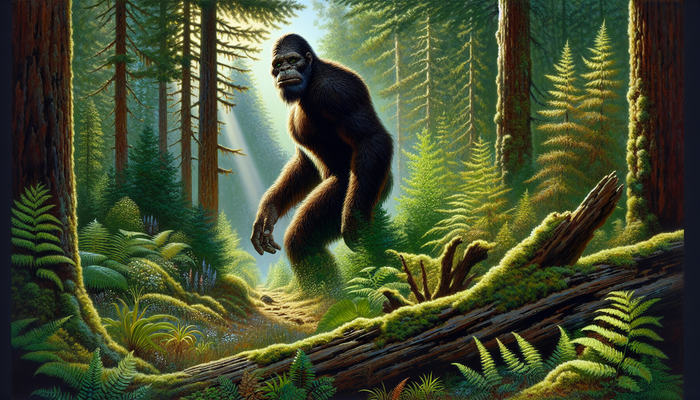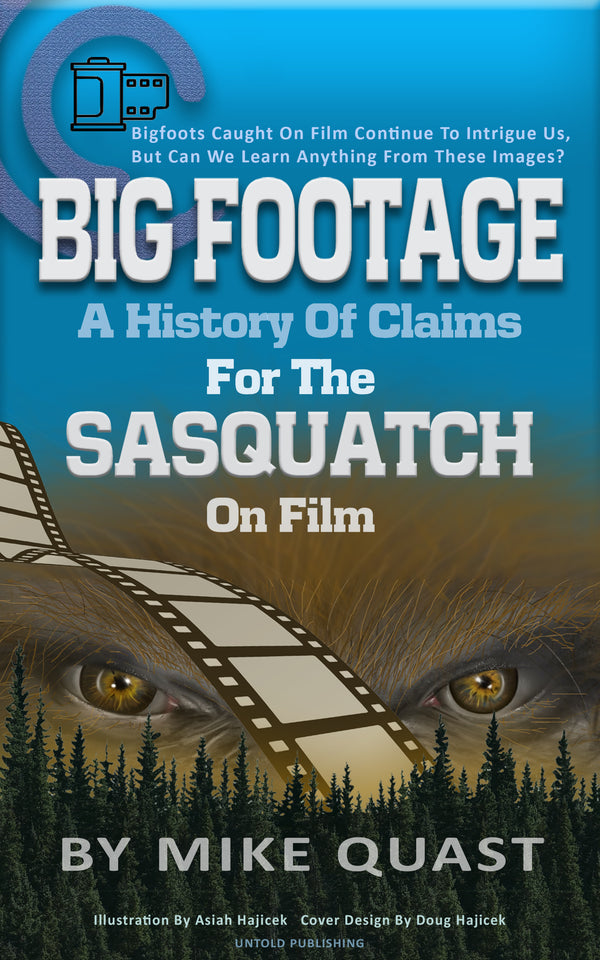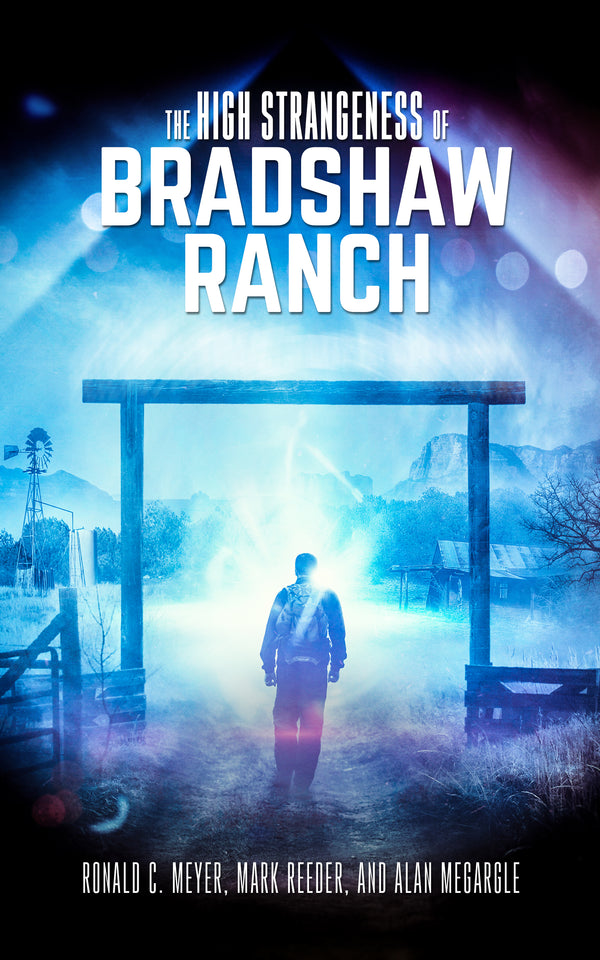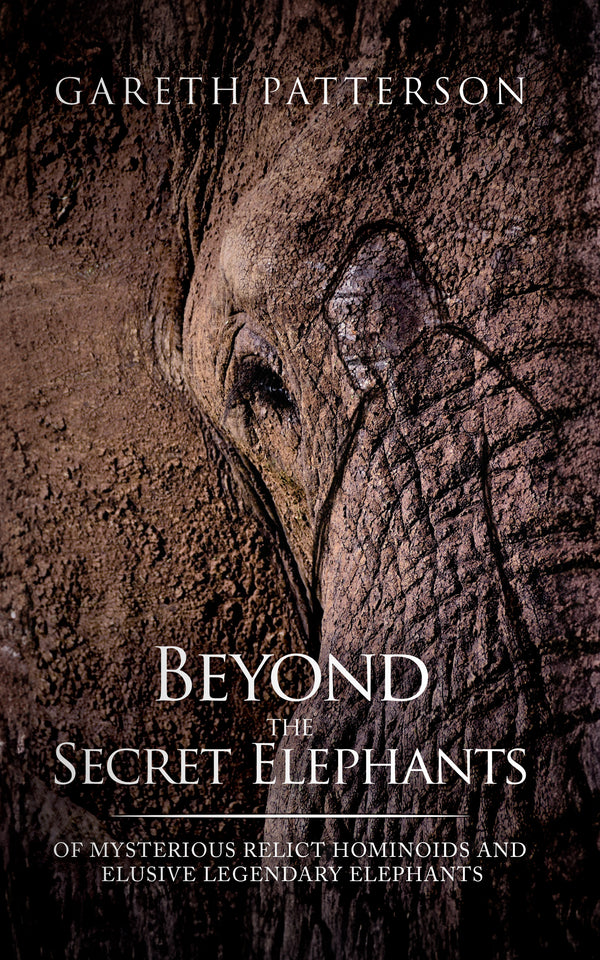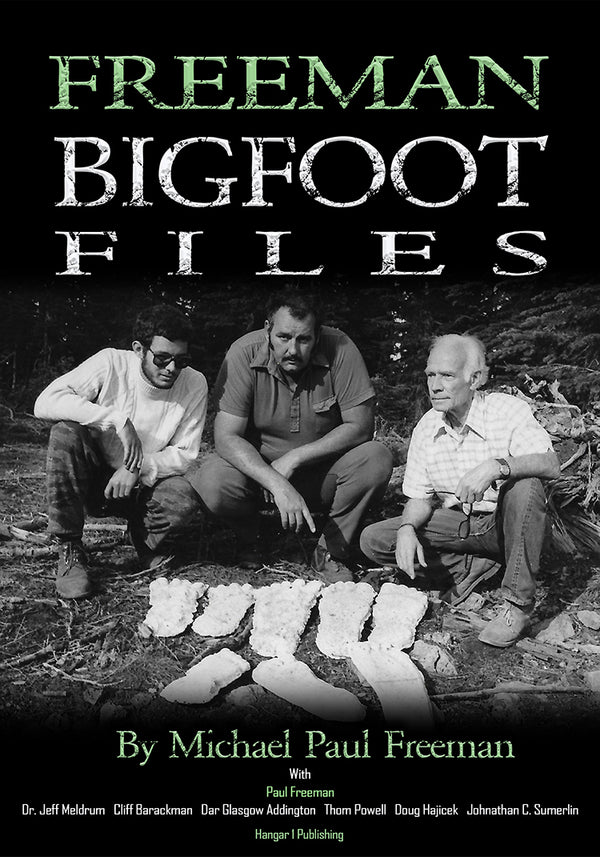Exploring the Rich Tapestry of Arkansas Folklore
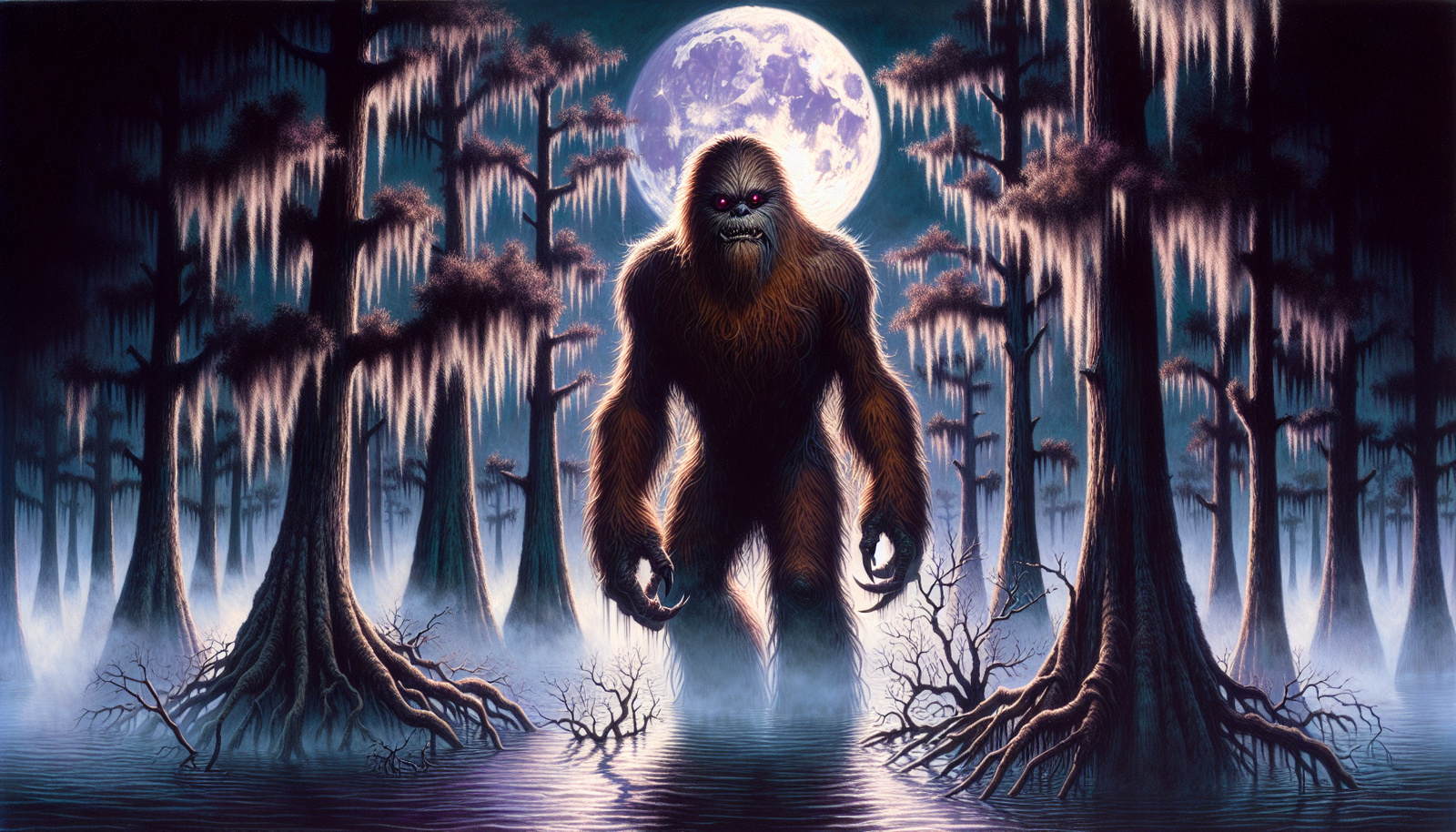
By James Roberts, Cryptozoologist
The Roots of Arkansas Folklore
To understand Arkansas folklore, we must first dig into the fertile soil of its origins. Long before European settlers arrived, Native American tribes like the Quapaw, Osage, and Caddo called this land home. Their rich oral traditions laid the groundwork for the stories that would come to define Arkansas folklore. When European settlers, particularly those from the Appalachian region, arrived in the 18th and 19th centuries, they brought with them a wealth of folk traditions that blended with those of the indigenous peoples.
This melting pot of cultures gave birth to a unique brand of folklore that's distinctly Arkansan. The oral tradition, a hallmark of folklore, allowed these stories to evolve and adapt over time. Each retelling added a new layer, a fresh perspective, ensuring that the tales remained relevant and engaging for new generations.
Take, for example, the story of the "Arkansas Traveler." This tale, which dates back to the early 19th century, perfectly encapsulates the blend of humor, hospitality, and cultural commentary that characterizes much of Arkansas folklore. The story goes that a well-dressed traveler, lost in the Arkansas wilderness, encounters a local squatter playing a fiddle. After a series of humorous exchanges, the traveler completes the tune the squatter couldn't finish, earning himself a warm welcome.
This simple tale speaks volumes about Arkansas culture. It highlights the importance of music, the value placed on quick wit and humor, and the complex relationship between "outsiders" and locals. More than just a funny story, it's a cultural touchstone that's been adapted into songs, paintings, and even inspired the name of the state's official historic song.
Guardians of Tradition: Key Figures in Arkansas Folklore
While countless unnamed storytellers have kept Arkansas folklore alive over the centuries, a few key figures stand out for their contributions to documenting and preserving these traditions. Chief among them is Vance Randolph, often hailed as the father of Ozark folklore studies.
Randolph, born in 1892, spent decades traveling the Ozark region, collecting stories, songs, and folk remedies. His work, including seminal texts like "Ozark Magic and Folklore" and "We Always Lie to Strangers," provides an invaluable window into the rich cultural tapestry of the region. Randolph's approach was unique for his time. Rather than simply recording the stories, he immersed himself in the culture, living among the people whose traditions he sought to preserve.
One of Randolph's most fascinating contributions was his documentation of "power doctors" in the Ozarks. These folk healers, believed to possess supernatural abilities, were a crucial part of rural life in the early 20th century. Randolph's work sheds light on their practices, from using Bible verses to cure ailments to employing complex rituals to ward off evil spirits.
Another pivotal figure in Arkansas folklore studies is Mary Celestia Parler. As the founder of the Arkansas Folklore Society and a professor at the University of Arkansas, Parler dedicated her life to collecting and preserving the state's folk traditions. Her extensive collection of folk songs, now housed at the University of Arkansas, is a treasure trove for researchers and music enthusiasts alike.
Parler's work went beyond mere collection. She recognized the importance of context in understanding folklore. Her detailed notes often included information about the singers, their backgrounds, and the circumstances under which the songs were performed. This holistic approach provides a richer, more nuanced understanding of Arkansas folk traditions.
Monsters and Mysteries: The Cryptids of Arkansas
No exploration of Arkansas folklore would be complete without delving into the state's rich tradition of cryptid sightings. These mysterious creatures, neither fully believed nor entirely dismissed, occupy a special place in the state's folklore.
The Fouke Monster
The most famous of Arkansas's cryptids is undoubtedly the Fouke Monster. This Bigfoot-like creature, said to inhabit the swamps of Miller County, has been a part of local lore since the 1940s. But it was a series of sightings in the early 1970s that catapulted the Fouke Monster to national fame.
In May 1971, the Ford family reported being attacked by a large, hairy creature at their home near Fouke. The incident, which made headlines across the country, described a beast standing over seven feet tall, with red eyes and a terrible odor. While no concrete evidence of the creature was found, the story sparked a wave of monster mania in the area.
The Fouke Monster's fame reached new heights with the release of "The Legend of Boggy Creek" in 1972. This low-budget docudrama, featuring interviews with alleged eyewitnesses, became a surprise hit and cemented the Fouke Monster's place in American pop culture. The film's success spawned several sequels and inspired a generation of cryptid enthusiasts.
The White River Monster
But the Fouke Monster isn't Arkansas's only claim to cryptid fame. The White River Monster, affectionately known as "Whitey," has been a part of state lore for over a century. First reported in 1915, this aquatic enigma is said to inhabit the White River near Newport.
Descriptions of Whitey vary wildly, from a giant turtle-like creature to a serpentine beast with a spiny back. The most famous sighting occurred in 1937 when farmer Bramlett Bateman reported seeing a gray creature "as wide as a car and three cars long" in the river. The sighting sparked a media frenzy, with reporters and monster hunters descending on the area.
The White River Monster became such a part of local culture that in 1973, the Arkansas State Legislature passed a resolution creating the White River Monster Refuge. This unique piece of legislation made it illegal to "molest, kill, trample, or harm" the creature within the designated area.
The Ozark Howler
Rounding out Arkansas's cryptid trio is the Ozark Howler. This elusive beast, described as a large, bear-like creature with a distinctive howl, is said to roam the Ozark Mountains. While less famous than its Fouke or White River counterparts, the Ozark Howler has its fair share of devoted believers and colorful stories.
These cryptid tales serve a deeper purpose than mere entertainment. They reflect the mystery and wildness that still exists in Arkansas's forests and waterways. In an age of Google Maps and GPS, these stories remind us that there are still unknowns in the world, still possibilities for discovery and wonder.
Ghosts and Hauntings: The Spectral Side of Arkansas
If cryptids represent the wild, untamed aspects of Arkansas folklore, ghost stories speak to the state's rich history and the enduring power of the past. Arkansas is home to numerous allegedly haunted locations, each with its own unique tales of spectral residents.
The Crescent Hotel
Perhaps the most famous haunted site in Arkansas is the Crescent Hotel in Eureka Springs. Built in 1886, this grand Victorian structure has worn many hats over the years – luxury resort, conservative college for women, and even a hospital run by a fraudulent "doctor" who claimed to cure cancer.
Today, the Crescent Hotel bills itself as "America's Most Haunted Hotel," and it's not hard to see why. Guests and staff have reported numerous ghostly encounters over the years. One of the most frequently sighted spirits is that of a stonemason who fell to his death during the hotel's construction. He's said to appear in Room 218, often accompanied by the smell of tobacco.
Another regular spectral visitor is "the lady in the Victorian nightgown," believed to be the ghost of a young woman who fell or was pushed from a top-floor window. Some guests have even reported seeing the ghost of Norman Baker, the charlatan doctor who ran his dubious cancer hospital in the building in the 1930s.
The Gurdon Light
But not all of Arkansas's ghost stories are tied to specific buildings. The Gurdon Light, a mysterious floating light seen along the railroad tracks near Gurdon, has been puzzling locals since the 1930s. Many believe the light is the ghost of a railroad worker who was killed on the tracks, while others attribute it to swamp gas or other natural phenomena.
Regardless of its origin, the Gurdon Light has become a local legend, drawing curious visitors and paranormal investigators alike. It's even inspired an episode of the television show "Unsolved Mysteries."
The Old State House
The Old State House in Little Rock, the oldest standing state capitol building west of the Mississippi, is another hotbed of paranormal activity. Staff and visitors have reported hearing disembodied footsteps, seeing shadowy figures, and feeling unexplained cold spots throughout the building.
One of the most famous ghosts said to haunt the Old State House is that of Speaker John Wilson, who stabbed Representative Joseph Anthony to death on the House floor in 1837. Some say Wilson's ghost still roams the old House chamber, perhaps seeking redemption for his violent act.
These ghost stories do more than just give us a thrill. They connect us to the past, keeping alive the memories of those who came before. They remind us of the complex, often tragic history that has shaped Arkansas, and they invite us to consider the possibility that there might be more to our world than what we can see and touch.
Folk Healing and Superstitions: The Practical Side of Folklore
While tales of monsters and ghosts capture the imagination, much of Arkansas folklore is deeply practical, rooted in the day-to-day lives of its people. This is particularly evident in the rich tradition of folk healing and the myriad superstitions that have guided Arkansans' actions for generations.
Folk Healing
Folk healing, often referred to as "granny medicine" in the Ozarks, was born out of necessity. In the isolated mountain communities of early Arkansas, professional medical care was often unavailable or unaffordable. People turned to traditional remedies, many of which had been passed down through generations.
These remedies often combined herbal knowledge with a dash of superstition and a healthy dose of common sense. For instance, sassafras tea was a common cure-all, believed to purify the blood and cure everything from rheumatism to skin diseases. Modern science has shown that sassafras does indeed have some medicinal properties, though it's also potentially carcinogenic in large doses.
Other remedies were more esoteric. To cure a sty on the eye, one might rub it with a gold wedding ring while reciting a specific charm. To stop bleeding, one could recite Ezekiel 16:6 ("And when I passed by thee, and saw thee polluted in thine own blood, I said unto thee when thou wast in thy blood, Live; yea, I said unto thee when thou wast in thy blood, Live.") This blend of practical treatment and spiritual belief is a hallmark of Ozark folk healing.
Superstitions
Superstitions, too, played a significant role in Arkansas folk culture. Many of these beliefs were tied to agriculture, reflecting the rural nature of much of the state. For example, it was widely believed that planting potatoes on Good Friday would ensure a bountiful crop. Conversely, it was considered bad luck to thank someone for plant cuttings or seedlings, as this would prevent the plants from thriving.
Weather forecasting was another area rich in folklore and superstition. The shape of a persimmon seed was said to predict the severity of the coming winter. A spoon shape meant heavy snow, a fork shape indicated a mild winter, and a knife shape warned of icy winds that would "cut" through you.
These beliefs, while often dismissed as mere superstition by modern science, served important functions in their communities. They provided a sense of control over unpredictable elements like weather and crop yields. They also helped to preserve and pass on practical knowledge about the natural world.
Take the persimmon seed prediction, for example. While there's no scientific evidence that the shape of the seed correlates with winter weather, the tradition encourages people to observe nature closely and pay attention to subtle changes in their environment. This kind of attentiveness could indeed help in predicting weather patterns and preparing for the coming season.
Similarly, many folk remedies, while not always effective in the way people believed, often had some basis in actual medicinal properties of plants. The practice of using willow bark to treat pain, for instance, predates the discovery of aspirin, which is derived from a compound found in willow bark.
In this way, Arkansas folklore served as a repository of practical knowledge, helping communities survive and thrive in sometimes harsh conditions. It's a testament to the ingenuity and resilience of the state's people, and a reminder that wisdom can come from unexpected sources.
The Evolution of Arkansas Folklore
As with all living traditions, Arkansas folklore continues to evolve. While tales of the Fouke Monster or the White River Monster may seem quaint in our age of smartphones and social media, new urban legends and modern folklore are constantly emerging.
Take, for example, the story of the "Gurdon Light." While the mysterious light has been part of local lore since the 1930s, it gained new life in the 1990s when it was featured on the television show "Unsolved Mysteries." This national exposure brought a new generation of curiosity seekers to Gurdon, eager to experience the phenomenon for themselves.
Similarly, the internet has given new life to old stories and created platforms for new ones to spread. Online forums and social media groups dedicated to Arkansas folklore allow enthusiasts to share experiences, debate theories, and keep these traditions alive in the digital age.
But it's not just the medium of transmission that's changing. The content of folklore itself is evolving to reflect modern concerns and experiences. For instance, some modern retellings of the Fouke Monster story incorporate elements of government conspiracy theories, reflecting contemporary anxieties about secrecy and surveillance.
This evolution is a natural part of the folkloric process. As society changes, so too do the stories we tell about ourselves and our world. What remains constant is the human need for narrative, for explanations of the unexplained, and for connections to our past and our community.
The Importance of Preserving Arkansas Folklore
In an age of rapid technological advancement and cultural homogenization, preserving local folklore becomes increasingly important. These stories, beliefs, and traditions are more than just entertaining tales – they're a vital part of Arkansas's cultural heritage.
Folklore provides a link to the past, helping us understand the experiences and worldviews of those who came before us. It offers insights into how communities have historically dealt with challenges, from natural disasters to social upheaval. By studying and preserving these traditions, we gain a richer, more nuanced understanding of Arkansas history and culture.
Moreover, folklore can serve as a source of community pride and identity. The unique stories and traditions of Arkansas set it apart, giving residents a sense of place and belonging in an increasingly globalized world.
But preservation isn't just about recording stories in books or databases. It's about keeping these traditions alive in the community. This might mean organizing storytelling events, incorporating folklore into local education curricula, or finding new, innovative ways to share these stories with younger generations.
The challenge lies in striking a balance between preservation and evolution. While it's important to maintain the integrity of these traditions, folklore must also remain relevant to contemporary audiences. This might mean finding new ways to tell old stories, or recognizing and documenting the new folklore that's constantly being created.
As we look to the future, the rich tapestry of Arkansas folklore offers a valuable resource. These stories remind us of the power of imagination, the importance of community, and the enduring human need for wonder and mystery. Whether it's the tale of a monstrous creature lurking in the swamps, a ghostly light floating above railroad tracks, or a simple home remedy passed down through generations, each piece of folklore is a thread in the complex, beautiful fabric of Arkansas culture.
In the end, the folklore of Arkansas is more than just a collection of stories. It's a living, breathing part of the state's identity, constantly adapting and evolving while remaining rooted in the rich soil of tradition. As long as there are stories to tell and people to tell them, the folklore of Arkansas will continue to thrive, offering new generations a chance to connect with their heritage and explore the mysteries that still lurk in the shadows of the Natural State.
From Bigfoot to UFOs: Hangar 1 Publishing Has You Covered!
Explore Untold Stories: Venture into the world of UFOs, cryptids, Bigfoot, and beyond. Every story is a journey into the extraordinary.
Immersive Book Technology: Experience real videos, sights, and sounds within our books. Its not just reading; its an adventure.




